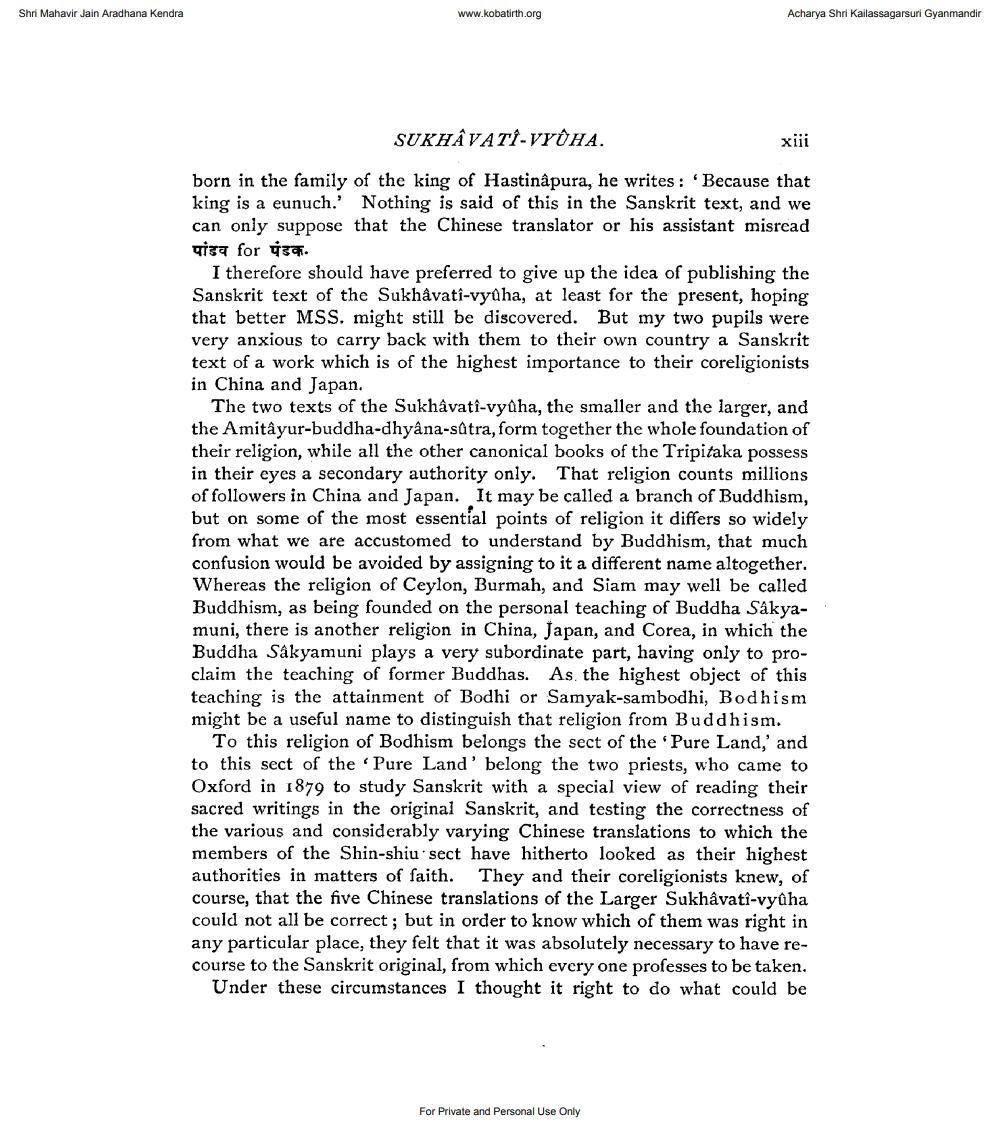________________
Shri Mahavir Jain Aradhana Kendra
www.kobatirth.org
SUKHAVATI-VYUHA.
xiii
born in the family of the king of Hastinapura, he writes: 'Because that king is a eunuch.' Nothing is said of this in the Sanskrit text, and we can only suppose that the Chinese translator or his assistant misread पांडव for पंडक.
Acharya Shri Kailassagarsuri Gyanmandir
I therefore should have preferred to give up the idea of publishing the Sanskrit text of the Sukhâvati-vyüha, at least for the present, hoping that better MSS. might still be discovered. But my two pupils were very anxious to carry back with them to their own country a Sanskrit text of a work which is of the highest importance to their coreligionists in China and Japan.
The two texts of the Sukhâvatî-vyuha, the smaller and the larger, and the Amitâyur-buddha-dhyana-sútra, form together the whole foundation of their religion, while all the other canonical books of the Tripitaka possess in their eyes a secondary authority only. That religion counts millions of followers in China and Japan. It may be called a branch of Buddhism, but on some of the most essential points of religion it differs so widely from what we are accustomed to understand by Buddhism, that much confusion would be avoided by assigning to it a different name altogether. Whereas the religion of Ceylon, Burmah, and Siam may well be called Buddhism, as being founded on the personal teaching of Buddha Såkyamuni, there is another religion in China, Japan, and Corea, in which the Buddha Sakyamuni plays a very subordinate part, having only to proclaim the teaching of former Buddhas. As the highest object of this teaching is the attainment of Bodhi or Samyak-sambodhi, Bodhism might be a useful name to distinguish that religion from Buddhism.
To this religion of Bodhism belongs the sect of the 'Pure Land,' and to this sect of the 'Pure Land' belong the two priests, who came to Oxford in 1879 to study Sanskrit with a special view of reading their sacred writings in the original Sanskrit, and testing the correctness of the various and considerably varying Chinese translations to which the members of the Shin-shiu sect have hitherto looked as their highest authorities in matters of faith. They and their coreligionists knew, of course, that the five Chinese translations of the Larger Sukhâvatî-vyuha could not all be correct; but in order to know which of them was right in any particular place, they felt that it was absolutely necessary to have recourse to the Sanskrit original, from which every one professes to be taken. Under these circumstances I thought it right to do what could be
For Private and Personal Use Only




